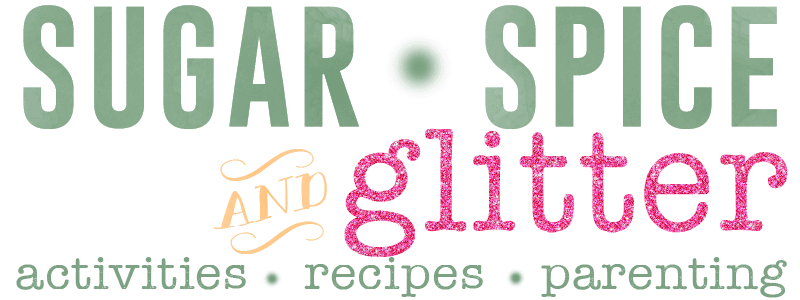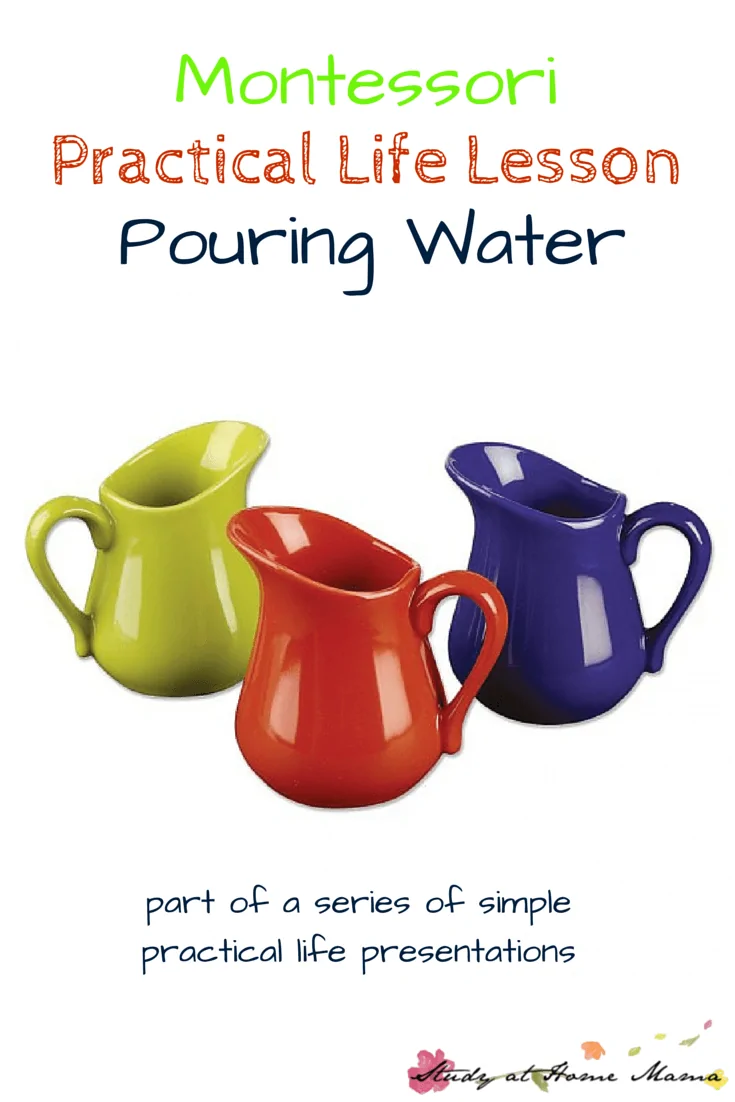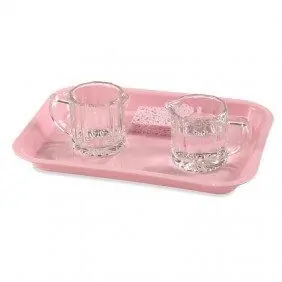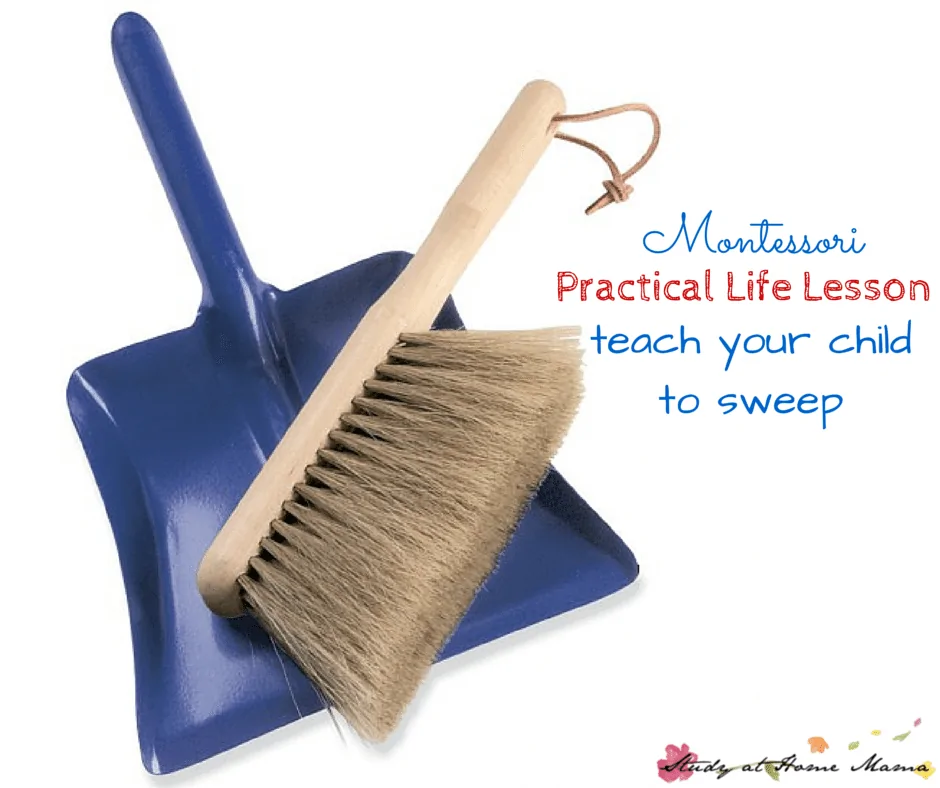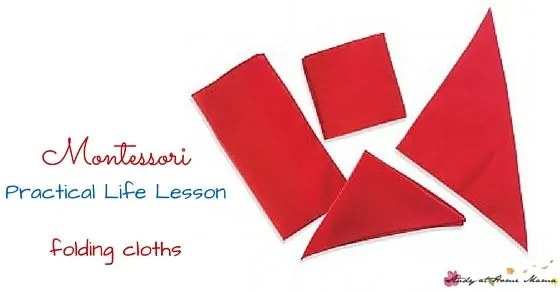Practical Life: Pouring Water
We began our practical life series with simple presentations, such as carrying a chair or rolling a work rug. Then we moved on to more involved lessons, such as using a mortar and pestle and hammering.
The practical life presentations move from easier to harder, from gross motor to fine motor.
Today, our Montessori Practical Life Lesson from Beth Holley is How to Pour Water.
In a Montessori classroom, the practical life activities are always available, so that the child can spontaneously choose an activity and repeat it as many times as she desires. Repetition is the key to development. As we’ve mentioned before, the goals of the practical life area are developmental, as well as practical. The young child is naturally driven to repeat activities in what Dr. Montessori called “an unconscious bid for self–perfection.”
As adults, we don’t necessarily want to do the same action over and over, even when we need the practice. Very young children, however, possess a natural drive to repeat, when an activity serves an inner need. Dr. Montessori enjoyed telling the story about the three-year-old girl who repeated removing, mixing up, and inserting the knobbed cylinders forty–two times in one sitting.
Our next series of water–pouring exercises allows for a lot of repetition too. Below I have included five different presentations. Depending on your child’s success, the sequential exercises will be presented over time.
Let’s dive in…so to speak.
How To Present Pouring Water
Purpose: Direct: To develop the movements needed to pour from one vessel to another without spilling. Indirect: To develop exact muscular control, independence, and concentration.
Age: 2 1/2 – 4
Prerequisite: pouring dry goods such as rice
Note: Exercises require a child–sized tray to carry the items, and a small bucket kept on the floor to dispose of the water.
The above presentation is a premade set sold from Montessori Services.
Presentation #1: Pitcher to Pitcher
Material: two small identical pitchers, one 3/4 full of water; sponge
1. Invite the child to carry the tray to the table.
2. Sit. Handles should face out to both sides. Grasp them with your thumb on top and one or two fingers through the handle.
3. Lift the pitchers simultaneously, raising the right above the left.
4. Center the right spout over the left pitcher and pour until the last drop of water falls.
5. Put down the full pitcher, then, still holding the now empty pitcher, wipe its lip with the sponge.
6. Put down the sponge and pitcher, orient the tray for the child, and invite the child to try.
Points of Interest: Does the child center the spout? Does she watch for the last drop?
Challenge: For much later: Increase the distance between the pitchers and see if you can still pour without spilling.
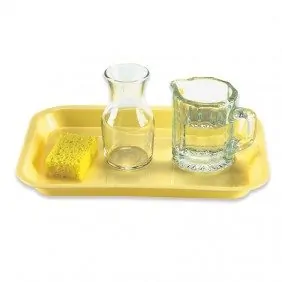
Presentation #2: Pitcher to Goblet
Material: small pitcher, 3/4 full of water; goblet or stem glass; sponge
1. Pour as before with the spout centered over the goblet, but this time steady the goblet on the tray.
2. Fill but don’t overflow the goblet. Wipe the pitcher’s lip as before.
3. Dispose of the water in the goblet by pouring it into the small bucket on the floor.
4. Invite the child to refill the pitcher from the tap and have a turn.
Point of Interest: Does the child stop before the goblet overruns?
Presentation #3: Pitcher to Cup and Saucer
Material: small pitcher, 3/4 full of water; a cup and saucer; sponge
As above, but pick up the cup along with the pitcher.
Points of Interest: Does the child stop before the cup overruns? Does she place the cup gently on the saucer?
Presentation #4: Pitcher to Containers of Various Sizes
Material: small pitcher, 3/4 full of water; three or four small containers of varying sizes; sponge
Note: small flower vases, shot glasses, or demitasses will give practice in judging the different vessels.
As above, filling one container at a time. Fill the pitcher as needed, and empty all containers into the bucket on the floor before pouring again.
Points of Interest: Does the child control the stream according to each container? Does she remember to wipe the lip each time?
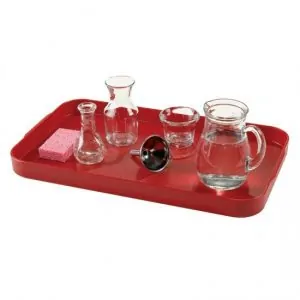
Presentation #5: Larger Pitcher, Funnel, and Vases
Material: medium sized pitcher; three or four vases of varying sizes and shapes, some with small openings; funnel; and sponge
As above, filling one container at a time, but this time the pitcher is larger and would not be carried on a tray. The child will need to stand to fill the vases. Introduce the funnel by saying “This is a funnel; we use it to pour into tiny openings.” Demonstrate holding the funnel to keep it steady and pouring a little bit at a time into the funnel.
Point of Interest: Does the child judge the amount of water to pour into the funnel?
Note: In all exercises, if water spills, demonstrate using the sponge to mop it up and squeezing the sponge over the bucket. End each lesson by emptying and drying the bucket.
Points of interest can be small challenges to achieve precision. You can highlight a point of interest by showing the activity again and emphasizing that step with your movements or a brief comment such as, “Oh, I need to wipe the lip.” Such details are not really essential to the task of pouring, but they are essential to helping the child develop precision and control. The control that a child develops in the practical life skills may carry over into other areas, improving impulse control, for instance. So, gather a few vessels and let the (repeated) fun begin!
To learn more about Montessori theory, please visit Beth’s blog A Montessori Lexicon. You can also find her at Teachers Pay Teachers.
Did you enjoy this Montessori Practical Life Lesson? Next up are teaching your child how to sweep and folding cloths.
